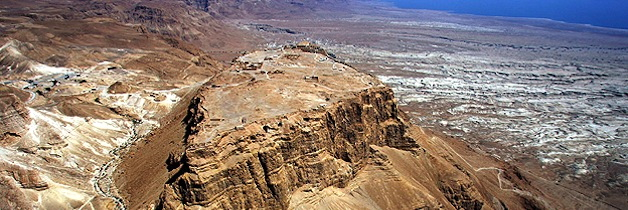Dwight D. Eisenhower said to the newly formed fledgling nation of Israel,
“Our forces saved the remnants of the Jewish people of Europe for a new life and a new hope in the reborn land of Israel. Along with all men of good will, I salute the young state and wish it well.”
Are these words still true? Is there new life and new hope in the reborn land of Israel? For the time being, there’s only strife. On November 14, 2012, Gaza’s Hamas launched one of the largest rocket barrages so far, focusing on Tel Aviv. Then on November 15, Israel retaliated with laser-guided rockets supposedly killing the Hamas commander. The onslaught continues with no hope for long-term peace on the horizon. Can Israel withstand the attacks? Are Israel’s enemies joining forces with each other? And what are Israel’s options?
Israel can hold up against the attacks, but at a cost. Last week, Israel test fired its newest interceptor, the David Sling. The David Sling is supposed to be the successor to the Iron Dome short-range missile defense shield they already have in place. Israel has two fully-operational Iron Dome batteries in place with a reported effectiveness of 90%. The shield provides a tremendous amount of peace to the already terrorized Israelis.

A David’s Sling anti-rocket missile at Israel’s coastal Palmachim Air Force Base. (Photo: AFP/Getty Images)
President Obama, despite opposing claims, has increased military aid to Israel. However, the reason for the increase in the aid was because of Israel’s new Iron Dome. The U.S. has pledged to work with Israel on technological advancements to their mutual militaries. This funding is intended to increase the number of Iron Dome batteries Israel has and is expected to continue through 2017. According to The Wall Street Journal,
“For Israel’s primary foes Iran, Hezbollah and Hamas, their weapon of choice—rockets and missiles—could soon prove nearly obsolete. That could alter the strategic calculation for Israel and its enemies alike.”
The front against Israel is beginning to bolster and unify. While Israel has gained the technological capability to effectively defend herself, her enemies are finding they all have a common foe. Egypt is currently trying to broker a cease-fire between Israel and Gaza. However, at the same time, Egypt is working with Hamas to get Gaza hooked up to their power grid. While this deal has not yet been completed, in light of Morsi’s reluctance to meet with the Hamas officials, there is a dangerous relationship building between the two powers. The Economist recognized this relationship in an article published on September 29, 2012,
“Above Gaza’s parliament hangs a tableau of two smiling Islamist leaders. Muhammad Morsi, the new president of Egypt, and Ismail Haniyeh, prime minister of the neighboring Gaza Strip, which is run by Hamas, the Palestinians’ dominant Islamist movement.”
Not only is Hamas playing patty fingers with Egypt, but Iran is taking advantage of the temporary cease fire to restock the terrorists. The NY Times issued an article on November 21, 2012, stating,
“Above the bustling Niayesh highway in the western part of the Iranian capital, a huge billboard hangs on an overpass to remind drivers of Iran’s missile abilities. Cars zip underneath the image of a green missile on a launcher and text in Persian saying ‘Destination Tel Aviv.”
Many of the missiles used by Hamas during their latest attack on Tel Aviv were Iranian Fajr-3 and Fajr-5 rockets. While I don’t believe that Iran will use nuclear weapons on Israel, they are more than willing to supply Hamas with cheap short-range missiles. In Ahmadinejad’s own words, in 2005,
“Anybody who recognizes Israel will burn in the fire of the Islamic nation’s fury.”
With the scenario understood, Israel has two options. The first option is to continue to build up their Iron Dome shield and focus on replacing it with the David Sling in a decade or so. This would give Israel one of the strongest defenses in the world. However, this ultimately will only mitigate the problem at hand, not fix it. Hamas will continue to fire rockets supplied by Iran.
The second option is to enter into a ground war with the terrorists. The option of a ground war, while it would prove costly and ugly, is quickly becoming the most plausible. Multiple news sources released information that Israel is mobilizing its military in light of the recent barrage. CNN reported in a November 17, 2012, release,
“In fact, fears are rising that the opposite will hold true. Israel’s Cabinet on Friday approved the activation of up to 75,000 reservists, prime minister’s spokesman Mark Regev said. Also, the Israel Defense Forces reported earlier in the day that it is “mobilizing forces” in preparation for a ‘possible ground invasion of the Gaza Strip.’”
If Israel goes with scenario one, they will continue to lose lives and face an increasing number of rocket attacks. If Israel chooses option two, a ground war, they will face international outcry. Israel is in a losing battle and cannot stand without U.S. political support. It is impossible for anyone living outside of the area to truly understand what is going on. While we may try to make sense of the conflict, we only realize how little we know. As I’m writing this, I’m watching my RSS Feeder pop up with articles about an attack happening on a U.S. base in Afghanistan. Soldiers are dying as I write this. One thing is for sure. There are terrorists over there, who will go to any means to kill an American or an Israeli. Both of our nations are in the same boat.









